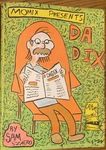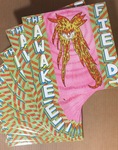
Final Cut presents – for the first time in English – Burns's latest major work, that had up to now only been available in the French language editions published by Cornelius under the title Dédales. All three Cornelius volumes are collected here in an elegantly designed and produced, 224 page, full color, clothbound hardcover volume by Pantheon Books. Very Nice.
Anyone familiar with the work of Charles Burns will not be surprised to learn that Final Cut is a multi-levelled work; that there are layers within layers. Even the title, which has an obvious first level meaning, is open to multiple readings. The action is set, as per usual with Burns, during an unidentified period that reads as being at some indeterminate point in the 1970s. What is different this time around is that the levels are less obvious, the layers more deeply – or, at least, differently – concealed within and/or below the surface level of the mise en scène, which is here more normative than in previous Burns works. Gone are the experientially subjective irruptions of undifferentiated alternate realities directly into the primary narrative plane.
Here, in the pages of Final Cut, the layers of consciousness are channeled within the narrative in a normative fashion, through the (then) dominant cultural forms of Hollywood movies (several in particular) – consumed both in theatres and on TV – and then through the more intimate, small scale cultural forms of 8mm films and drawing – as well as the purely subjective world of dreams, which are here more clearly demarcated as such – the combination of which is, more or less, comics.
The primary focus of Final Cut is the personal relationship dynamics within a tightly knitted group of four friends: Brian, Laurie, Jimmy and Tina, along with an orbiting more typical couple, James and Dana for contrast. This allows its central male protagonist, Brian, to be held more at arm's length by the narrative, seen more from the outside – particularly from the point of view of his opposite, mirroring, female co-lead, Laurie – rather than experienced form the inside. This narrative opening creates a space for empathy that is more accessible than Burns's previous works. This empathy for the other is (to varying degrees) omnidirectional, and the reader can feel themselves relating to each of the characters (although Jimmy remains largely an intriguing cipher).
All that said, Final Cut is, in every way, unmistakably a work by Charles Burns, and maintains all the pleasures of his previous works – if in a gentler, less overpowering way – and is highly recommended.




















